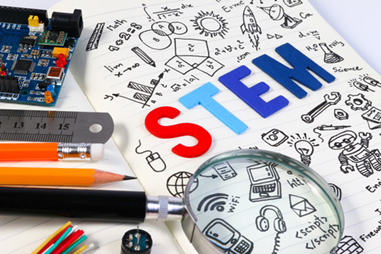The focus on STEM studies tends to link schools and universities – if anything, the VET link is stronger.
Australia needs to increase the proportion of secondary students who pursue STEM (science, technology, engineering and mathematics) through to Year 12 and beyond. The Office of the Chief Scientist believed if industry and schools worked more closely together, students would gain insights about STEM’s relevance to the workforce, encouraging them to pursue STEM in tertiary studies.
To that end, the Office of the Chief Scientist commissioned the Australian Industry Group (AiG) to pilot options for improving school-industry STEM partnerships. In June, the final project report was released. Strengthening school-industry STEM skills partnerships (124 pages) contains many important messages about VET’s relevance to STEM fields.
VET is too often discounted when it comes to STEM
One finding from consultations undertaken during the project is that VET is often discounted when it comes to STEM. What is too frequently missed, the report notes, is that
‘… for industry at least, the emphasis is on skills as much as the acquisition of academic or technical knowledge. Further, it needs to be remembered that scientific and technical education and skill formation are not limited to schools and universities but are also intrinsic in the vocational education and training (VET) sector.’
STEM partnerships in secondary schools
AiG’s report comes with case studies of schools and industry working together during the pilots, and it’s useful to consider just how relevant VET studies are in the context of the pilots.
Henley High School in South Australia partnered with Comace Pty Ltd which provides commercial joinery and maintenance services. The partners collaborated on a cabinet building project with a STEM focus on mathematics (calculations) and technology (design, materials selection). Also in South Australia, Banksia Park International High School partnered with global biopharmaceutical company, BTG Australasia Pty Ltd, to conduct a project on reducing the risk of contamination in laboratories. The STEM focus was on science (biology, laboratory operations), mathematics (problem solving and calculations) and technology.
It’s easy to see how school industry partnerships are related to VET studies. It’s also true of the partnership between Sacred Heart College in Kyneton, Victoria, and Lambley Nursery. Together they conducted a Year 9 project on breeding tomatoes, with a STEM focus on science (horticulture and agricultural science), mathematics (problem solving and calculations) and technology (spreadsheets).
AiG’s project demonstrates that schools and industry are open to partnering in project-based STEM activities that capture the imaginations of young people. The project report steps through the support that schools and industry need to develop working partnerships. Given the VET sector’s long-term operational relationships with schools, industry bodies and employers, there seems to be an opportunity for the VET sector to make a splash that attracts more school leavers to VET courses.
VET qualified STEM graduates outnumber university qualified STEM graduates
The Office of the Chief Scientist would no doubt be happy for the VET sector to jump in. As the Office’s 2015 report, Australia’s STEM workforce, pointed out:
‘Of the STEM-qualified population, approximately two thirds held Vocational Education and Training (VET) qualifications, while one third were higher education graduates with bachelor degrees or higher.’
It’s well and truly time to take the VET message to schools. Brokering and supporting school-industry partnerships is a valuable way of doing just that.








